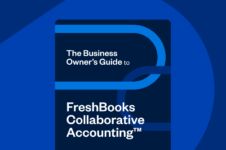Find ways to maximize tax breaks, so you have more money in your pocket.

Tax time can be a stressful time if you waited until the last minute instead of preparing throughout the year. So here are 5 money-saving tax tips that will not only help small business owners prepare for this filing season but make tax time less painful for years to come.
Table of Contents
1. Plan for Taxes All Year Round
Many new entrepreneurs think of tax time as something that happens once a year, but that’s a mistake. As a business owner, you need to make quarterly estimated tax payments, file sales, and payroll tax returns, and possibly issue W-2s and 1099s to employees and contractors.
Estimated quarterly tax payments are generally due on April 15th, June 15th, September 15th, and January 15th of the following tax year for the calendar year taxpayers. Form W-2 and 1099s must be mailed to recipients by January 31st and to the IRS by February 28th. Many business tax returns are due on March 15th, while those for C-Corporations are due on April 15th. This year, individual returns are due May 17th*. Payroll tax forms are due to the IRS on April 30th, July 31st, October 31st, and January 31st. Other state and local deadlines may apply depending on where you are located.
Make sure you know which deadlines apply to you and mark them on your calendar. It may seem tedious now, but you’ll thank yourself later when you never miss another deadline.
*On March 17, 2021, the IRS announced that the individual tax return deadline is now extended to May 17, 2021.
2. Separate Your Business and Personal Expenses
A common mistake small business owners make is co-mingling business and personal funds. It’s essential to have separate bank and credit card accounts for your small business.
Keeping business expenses separate from personal finances makes it a lot easier to track your business expenses and get things organized at tax time. If you buy supplies or a new laptop with your personal credit card, it’s all too easy for that expense to get missed when you add up your business deductions.
But when you track business expenses separately from personal expenses, it’s easy to see which transactions hit your business account. This helps ensure you never miss a valuable deduction so you can minimize your tax liabilities while saving time and effort.
3. Take Advantage of Small Business Deductions
One of the most overlooked ways to save money at tax time starts at the beginning of each tax year: save every receipt. Use cloud-based software to corral all of the loose receipts scattered around your desk, in your wallet, and in your car. They can add up to a lot of deductions.
A business expense is considered to be tax-deductible if it is ordinary and necessary. An ordinary expense is one that is common and accepted in your trade or business. A necessary expense is one that is helpful and appropriate for your trade or business.
As the recent tax reform bill reminds us, tax rules change every year. Don’t assume that the rules that applied last year automatically apply to this one. This is where it comes in handy to work with a good tax professional who stays on top of tax law throughout the year and thoroughly understands your business. They can help you stay abreast of tax changes and how they impact you.
4. Avoid Common Audit Traps
Going through an IRS audit is never fun. While not every audit results in owing additional money, they can still be a costly drain on your resource when you consider the time you’ll have to spend responding to the auditor’s requests, attending meetings, and possibly hiring a tax professional to represent you during the process.
For that reason, it’s a good idea to take steps to avoid some of the most common IRS traps:
- Large “miscellaneous” deductions. Your accounting software may have an “Other” or “Miscellaneous” expense category but use it sparingly. Miscellaneous expenses are those that don’t fit into any other categories. A small amount included in this line item won’t raise any eyebrows, but if you routinely record large transactions here, it could signal to the IRS that you’re padding expenses to avoid taxes.
- Improperly taking the home office deduction. Years ago many taxpayers avoided claiming a home office deduction because they feared it would flag their return for an audit. Today technology allows many people to work remotely and make money online, so a home office deduction is not the red flag it once was. But it’s still not for everyone. There are strict rules about who is eligible to claim a deduction. Make sure you know – and follow – them.
- “Estimating” business mileage. Were you a little lax about tracking the miles you drove for work this year? It may be tempting to hazard a guess, but doing so can get you into serious trouble down the road. The IRS requires contemporaneous records for all business driving, including the time and date, distance, and business purpose of each drive. Using big round numbers (e.g., “I drove 20,000 miles in 2017, and 50% of my miles were business”) is a signal to the IRS that not keeping adequate records to support your deduction.
- Classifying employees as independent contractors. If you hire people to work in your business, it’s crucial that you classify them correctly for tax purposes. Many business owners mistakenly classify employees as independent contractors to avoid employment taxes, but there are rules about who must be paid as an employee. Get it right to avoid paying back taxes and penalties.
5. Use Cloud Accounting to Speed Up Processes
Invest in a good cloud accounting program. This will help you track income and expenses in real-time. And cloud accounting software is regularly updated to comply with accounting best practices and IRS rules.
This can help make tax time a breeze. Once you’ve entered all of your business income and expenses, you can quickly create financial reports to send to your tax professional so they can file your return. You can also give your tax professional their own login, allowing them to collaborate with you throughout the year for tax planning, projections, and decision making.
Paying taxes isn’t fun, but it’s a part of running a successful business. The beginning of the year is an excellent time of review your business processes and make sure you’re maximizing your deductions.
You have year-round opportunities to reduce your tax burden, so keep them in mind throughout the year to minimize the time and expense of managing tax season.
This post was updated in March 2021.

Written by Janet Berry-Johnson, CPA and Freelance Contributor
Posted on February 1, 2018
 Everything You Need to Know About How to Lower Self-Employment Taxes in the U.S.
Everything You Need to Know About How to Lower Self-Employment Taxes in the U.S. Make Tax Time Easy: A Must-Read U.S. Small Business Tax Checklist
Make Tax Time Easy: A Must-Read U.S. Small Business Tax Checklist There’s A Better Way to Track Your Expenses
There’s A Better Way to Track Your Expenses





